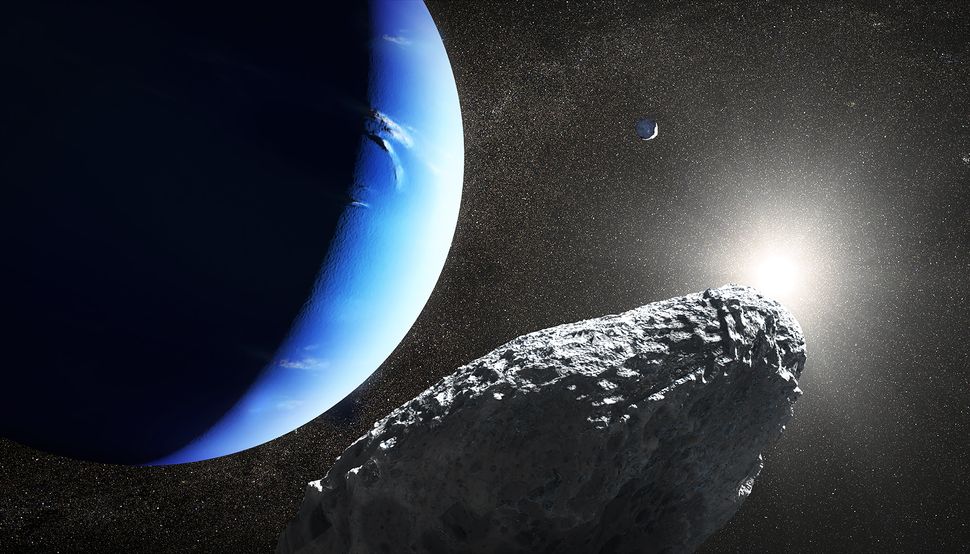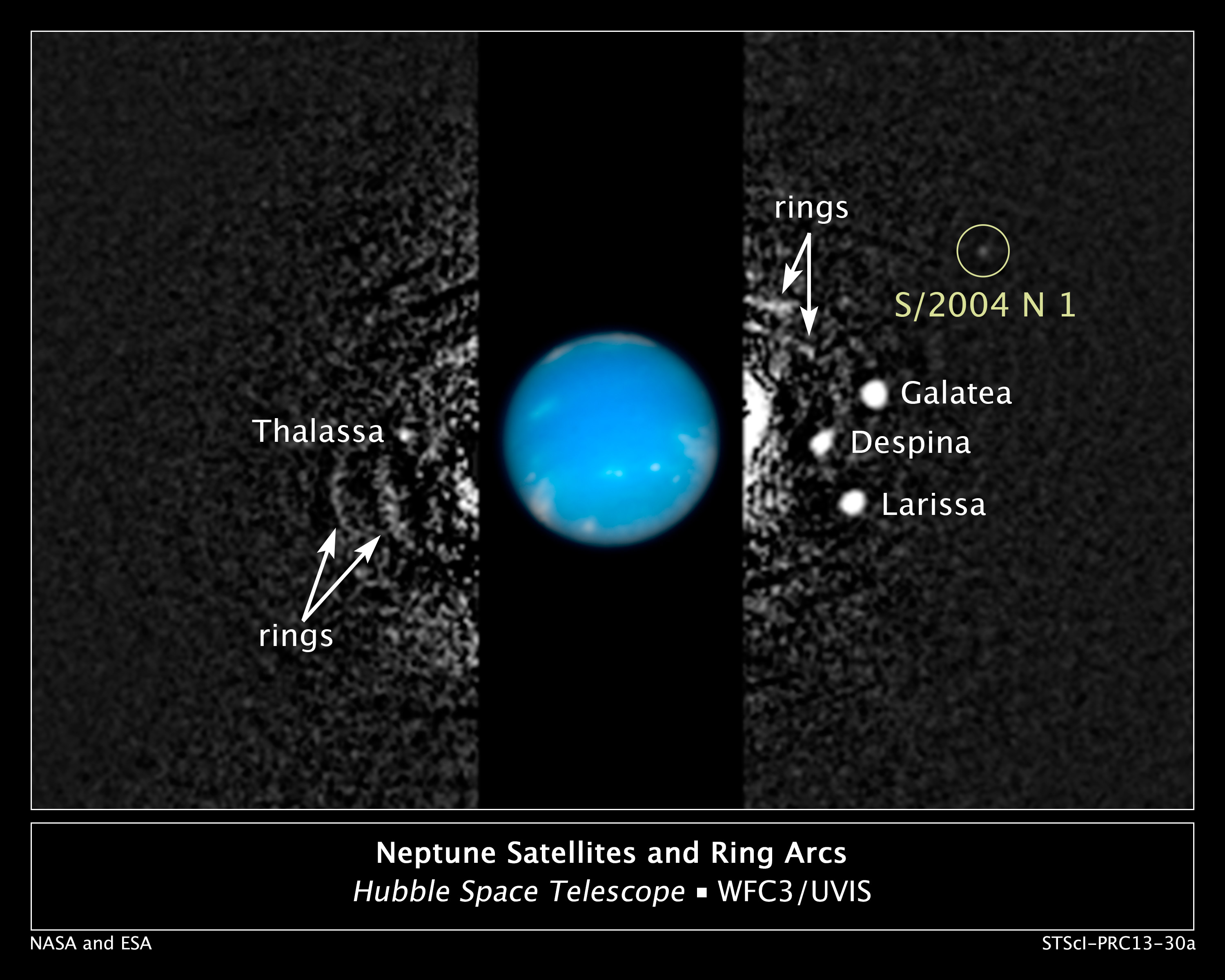
In our research group meeting this week, we discussed the recent discovery of a new moon orbiting Neptune, named after Poseidon’s chimerical winged pega-fish Hippocamp.
Hippocamp is about 12 km across, so small and dim that it wasn’t seen when Voyager 2 flew past in 1989, back when the B-52s were heading down the Atlanta Highway. In fact, Showalter and colleagues had to use high-precision Hubble observations and a new data-processing approach to spot the little moon circling Neptune just interior to another moon Proteus.

Hippocamp orbits so close to Proteus that Showalter and colleagues suggest it may have originated from this larger moon in a massive collision. That same collision may have created Proteus’ enormous impact basin Pharos, and Showalter suggests that collision would have liberated debris, some of which later accreted interior to Proteus’ orbit to form Hippocamp.
If Hippocamp really did form from such an impact, it has probably experienced numerous disruptive collisions itself over its billion year history. Based on studies of the frequency of large cometary collisions out near Neptune’s orbit, Showalter and colleagues estimate that Hippocamp may have been disrupted and re-accreted about 9 times in the last 4 billion years.
Having risen from its own ashes so many times, Hippocamp may be less like a mythical sea-horse and more like a cynthian phoenix.